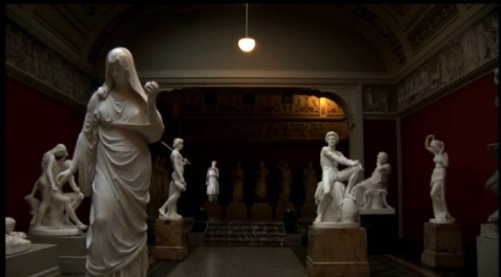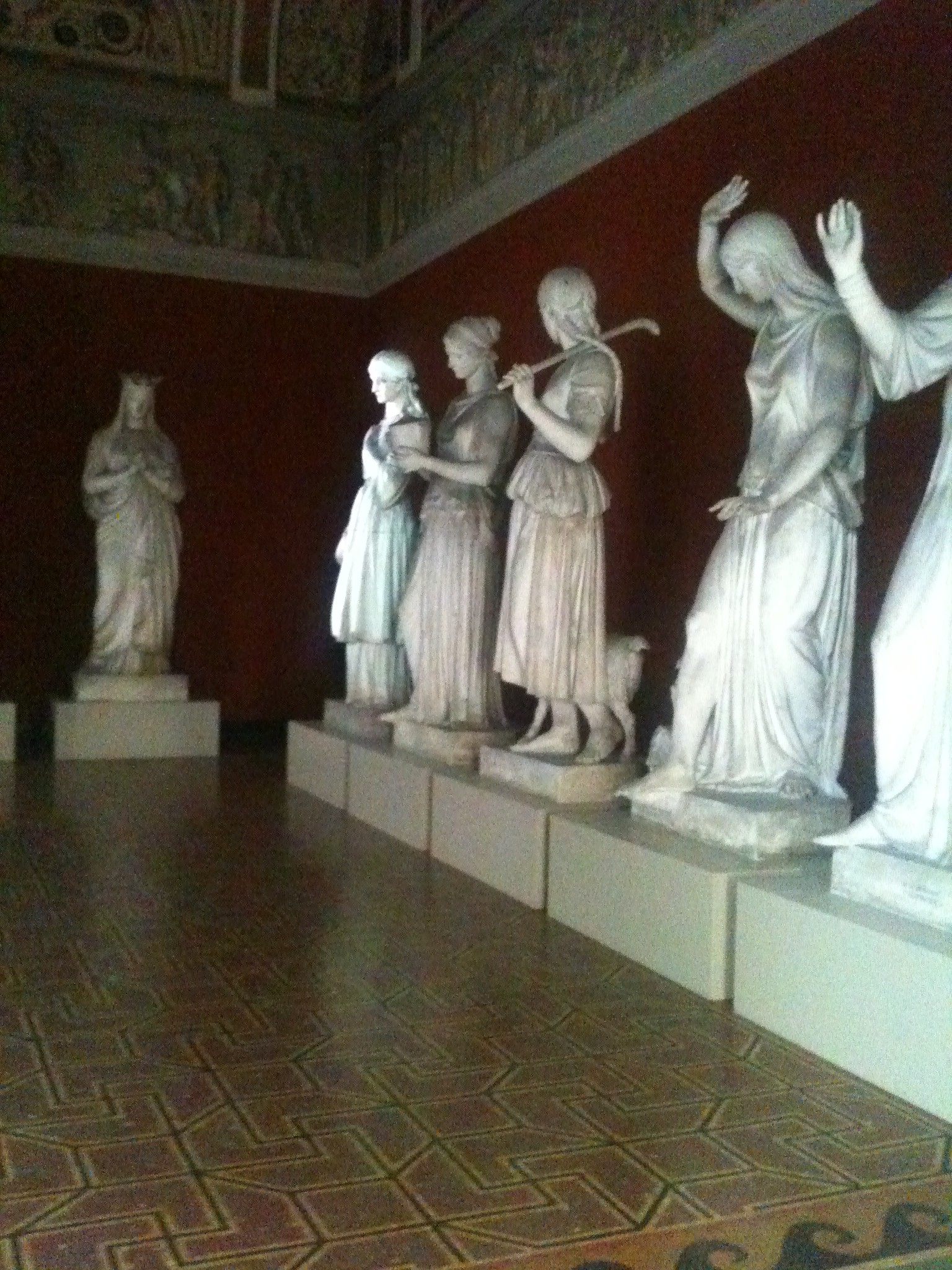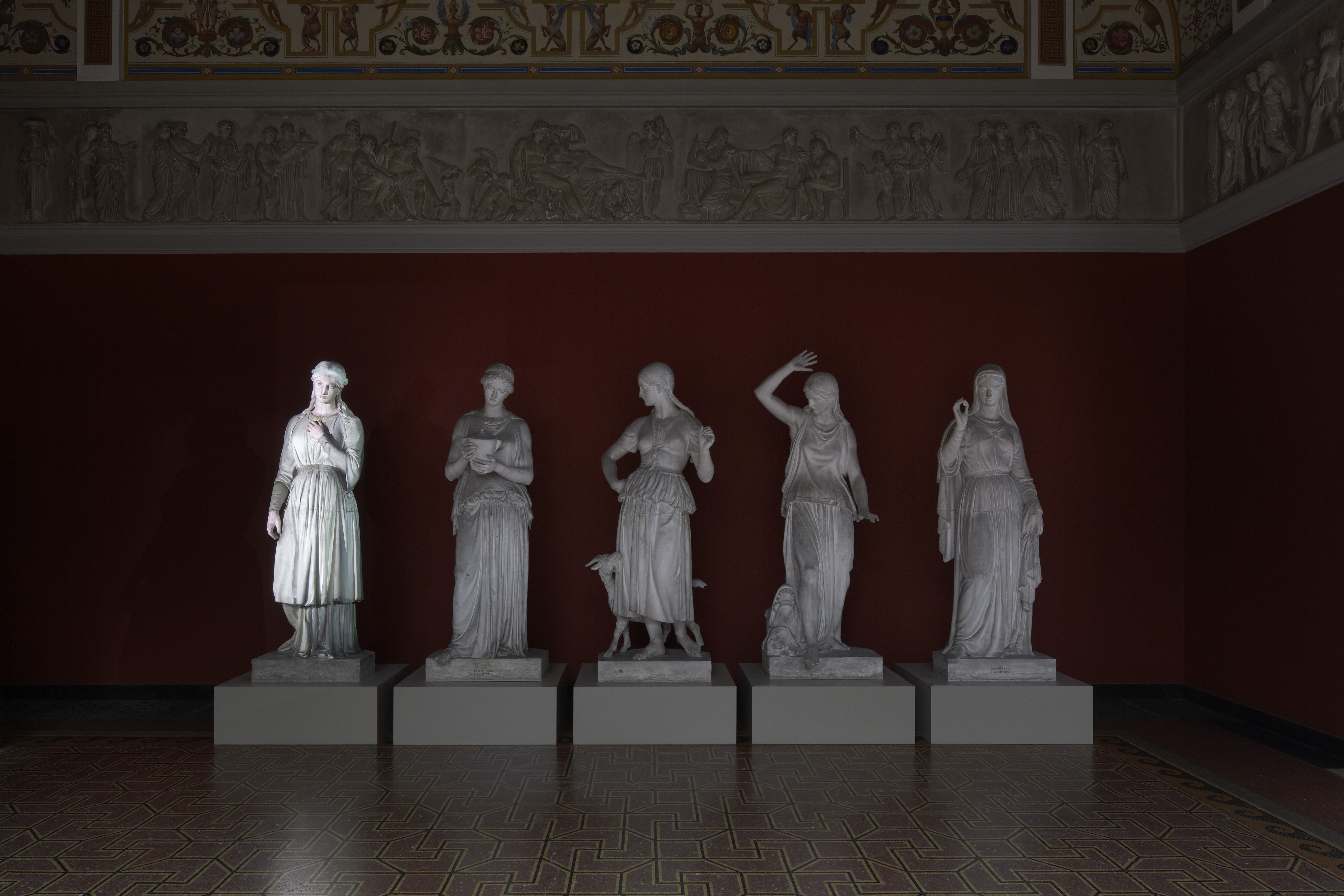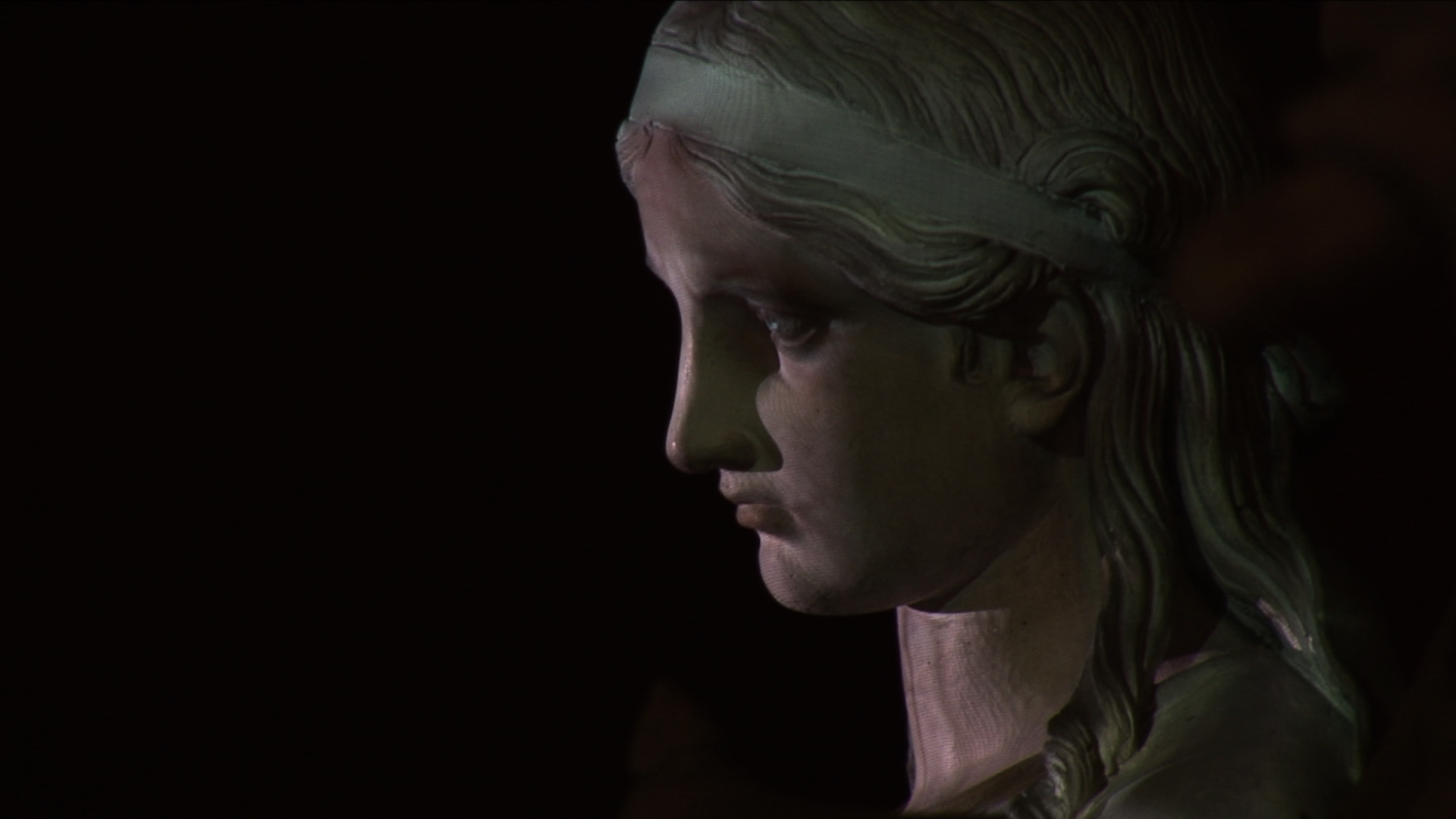Bissen’s Nanna (1857) is a national-romantic figure, created with the intention of showing that Nordic mythology could bear comparison with that of Ancient Greece. In Nordic myth Nanna is married to the happy and invulnerable Balder, who is nevertheless killed as a result of the evil Loke’s cunning. Nanna’s grief at Balder’s death is so great that she dies on his funeral pyre. Bissen’s Nanna is modest, virtuous and a little ponderous to look at, the incarnation of a faithful wife. Through Eva Koch’s work with the figure Nanna acquires a new, autonomous life; she is given eyes that see and a voice, and she both looks at and speaks to you, the individual viewer.
Nanna’s life is created through the projection of a video-animated portrait from two projectors directed straight onto the sculpture, at which the sound is also directed from a loudspeaker. The heavy figure turns out to contain a sensuous human being, who whispers to you enticingly, seductively: ”Come here; come closer; give me your ear, the goblet of your ear, so I can lie down in it like cold water; go with me, go my way, my shining way, my way, which runs like cold water…”. In this way Eva Koch makes it clear that the sculpture has also always been political, an expression of the time that produced it. Bissen’s work speaks of the moral code of his day and of its view on women, which are made clear for us through Eva Koch’s device. At the same time she gives the sculpture immediacy for us and shows that sculpture always contains the possibility of an intimate meeting between figure and viewer.



